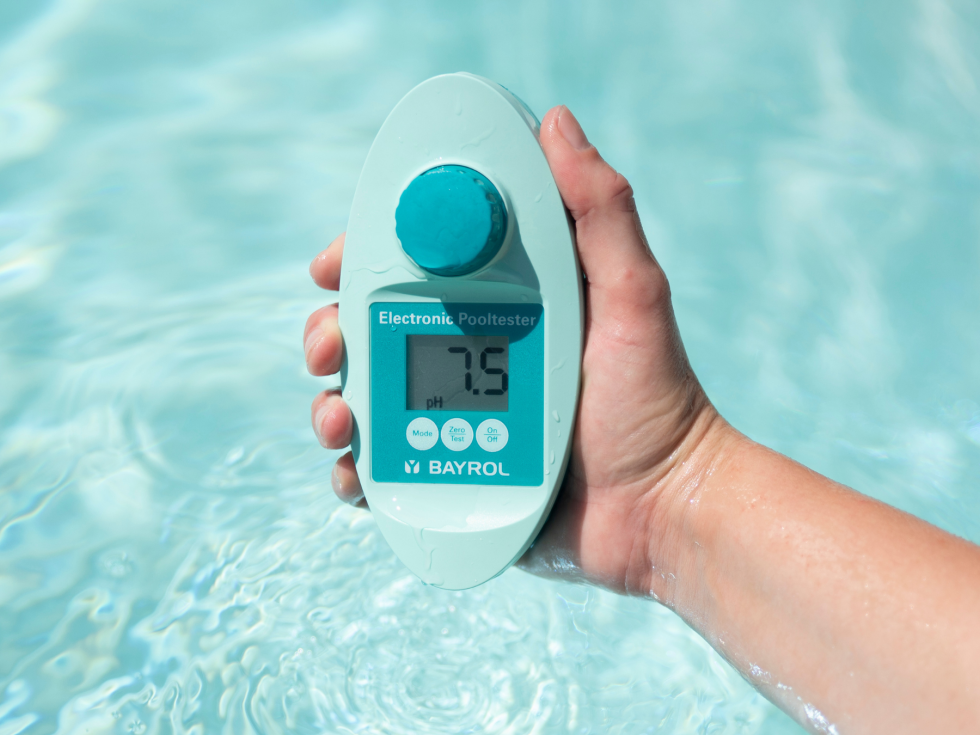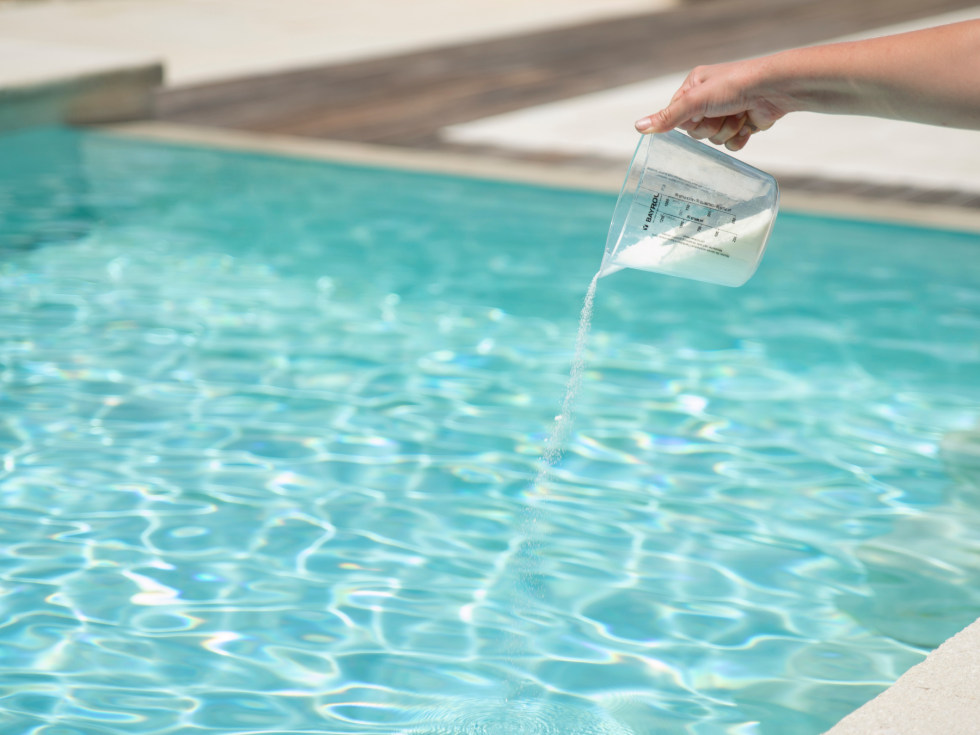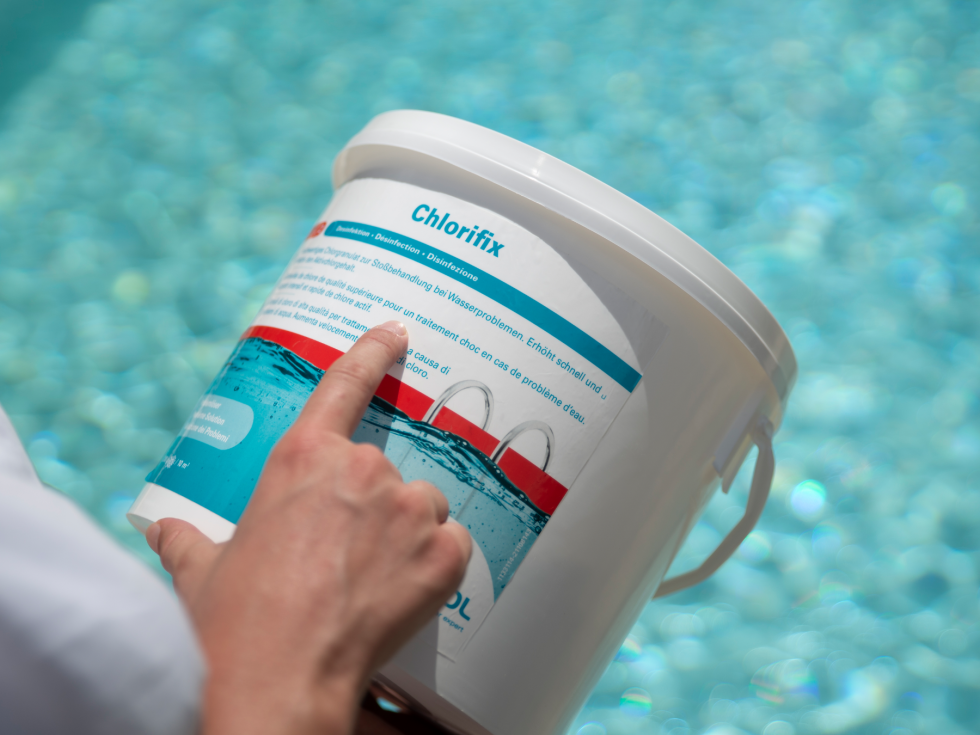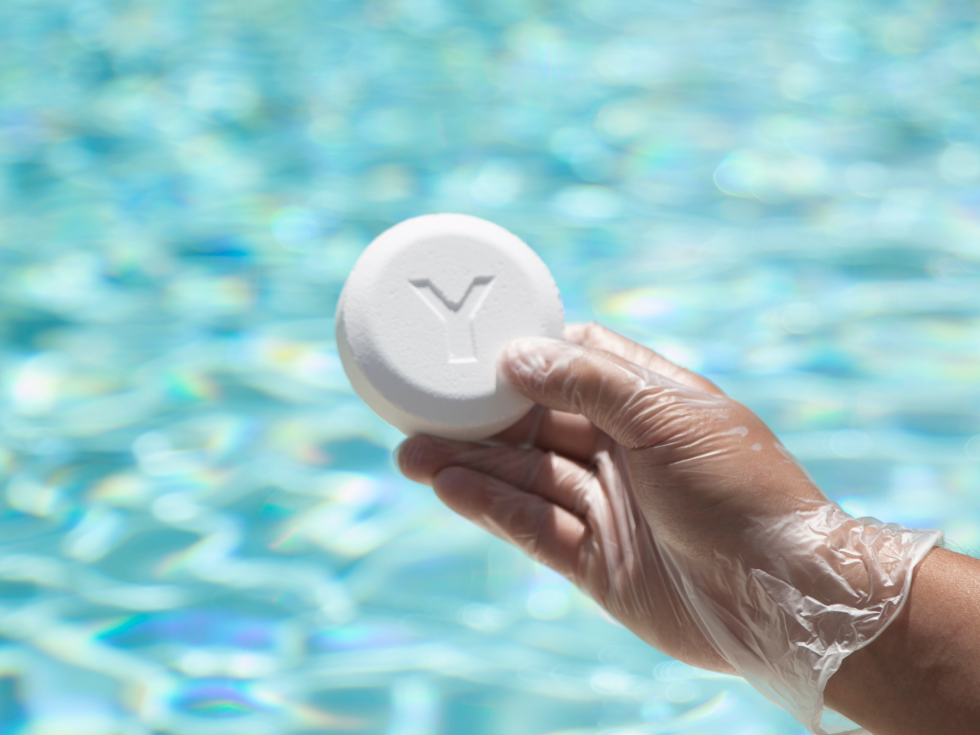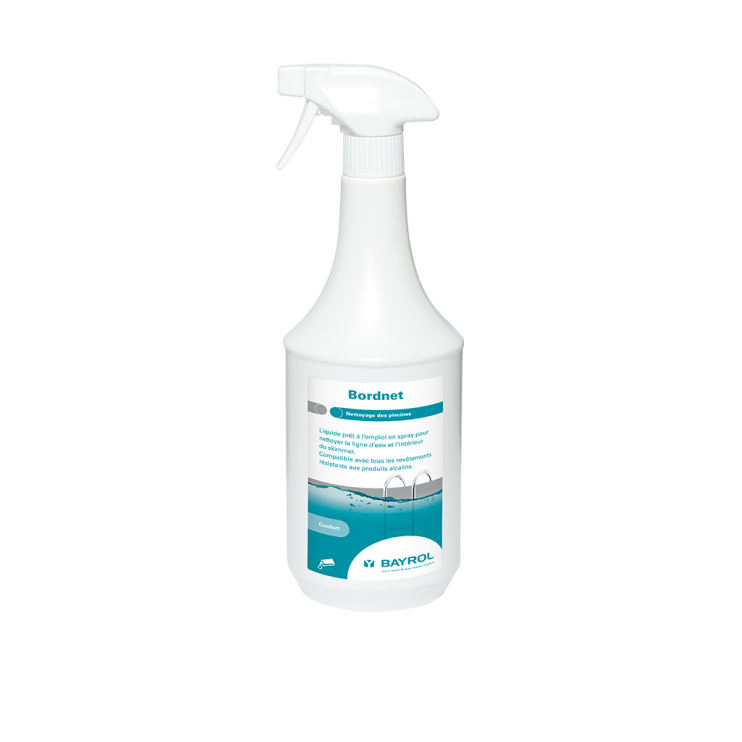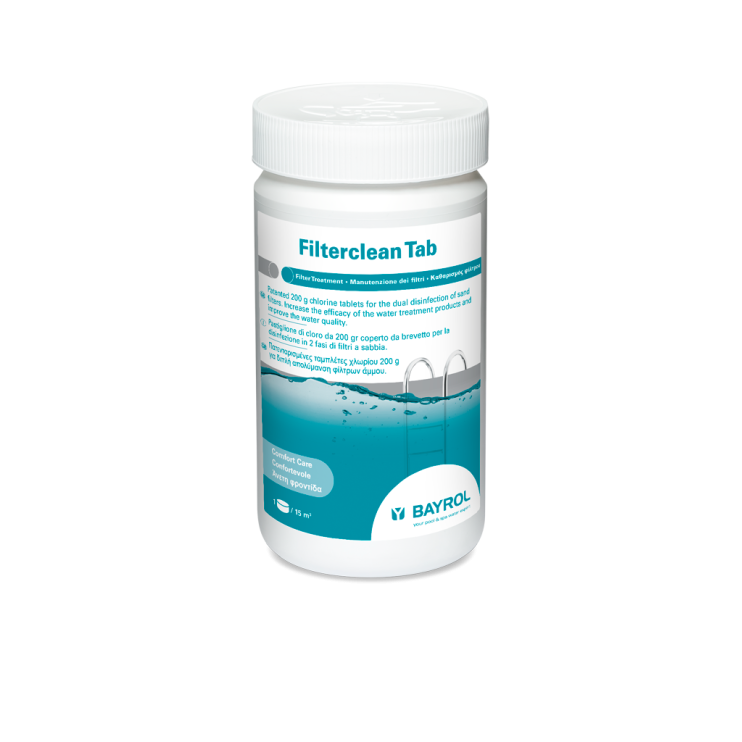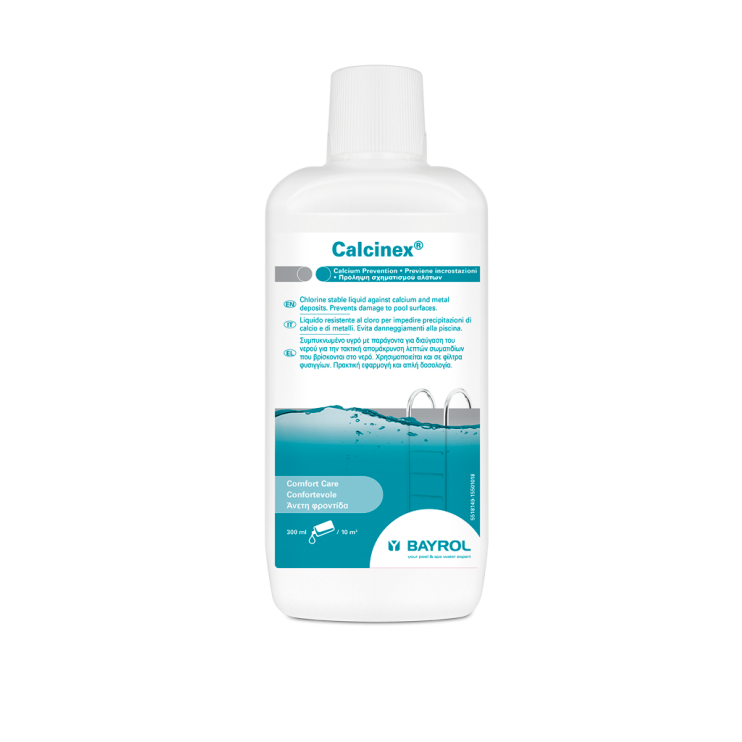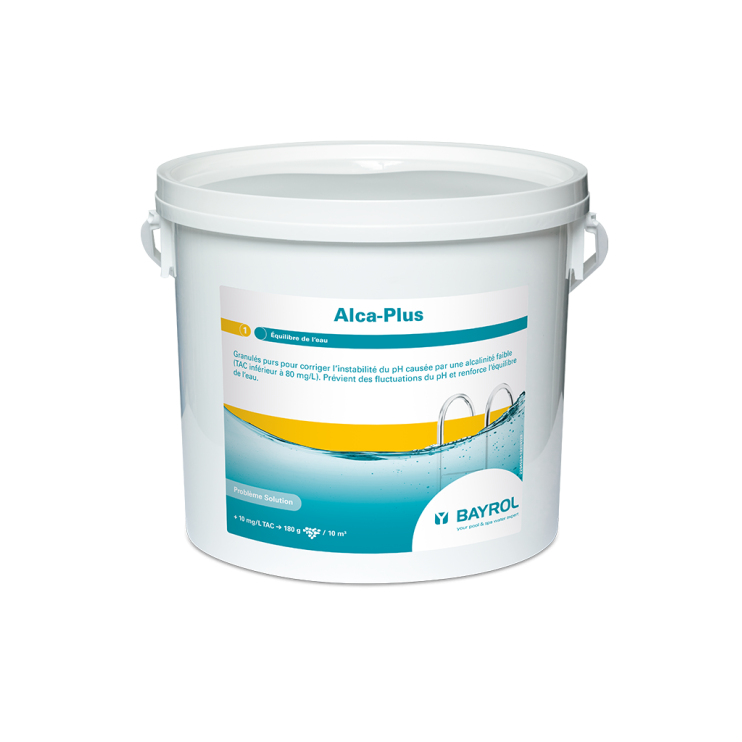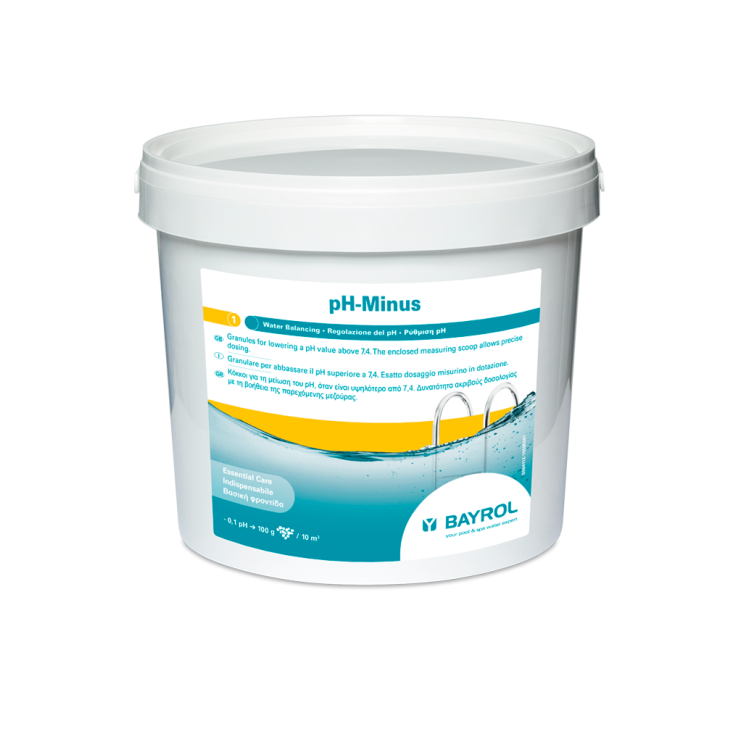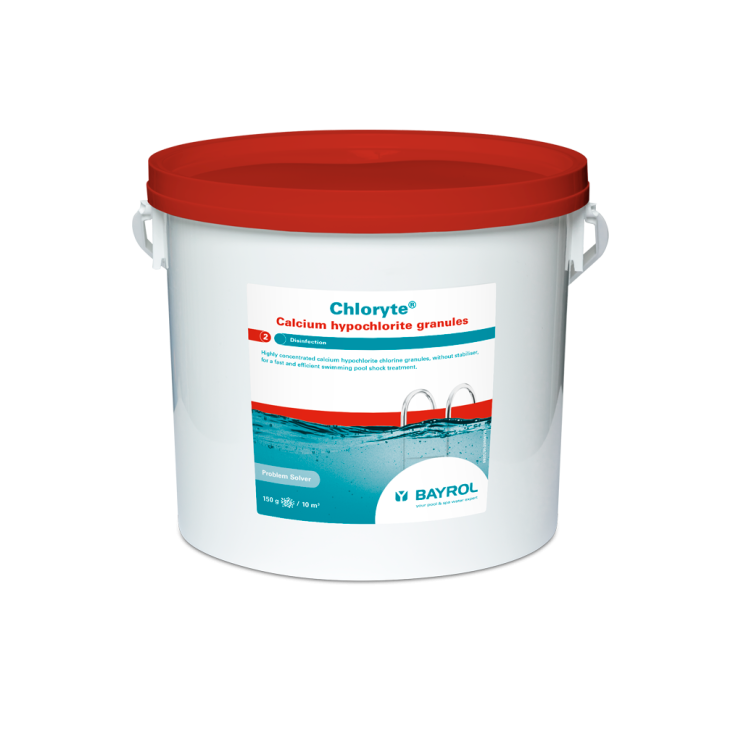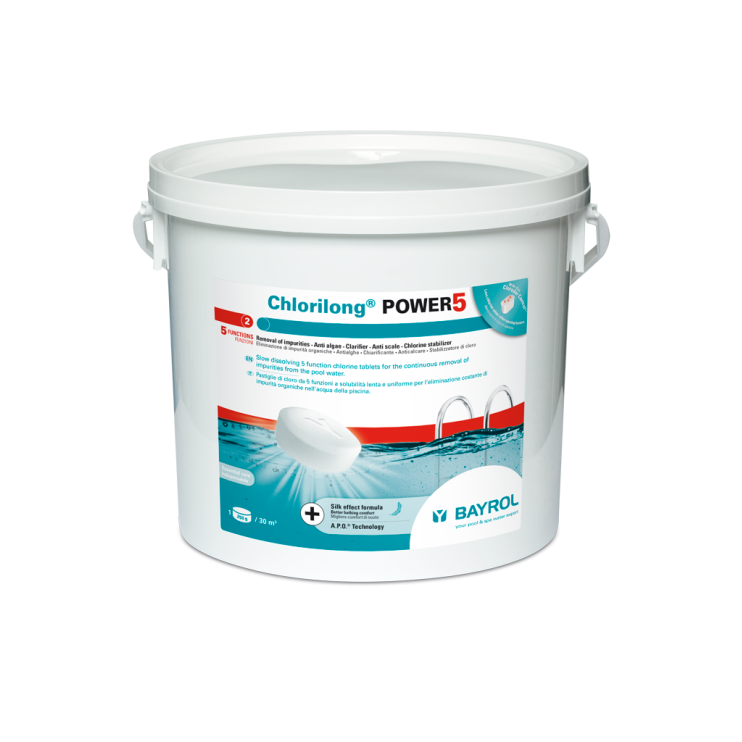-
Clean your pond liner
Brush the sides of the pond and clean the water line with a designated brush and water line cleaner. Suggested products > Adisan / Bordnet / Bordnet Gel S
-
Adjust the water level
Renew at least a third of the water between each season.
-
Clean the pond and filter thoroughly
For sand filters, backwash the filter. Disinfect the filter. Put the filtration on continuous operation until the water is crystal clear. Suggested product > Filterclean Tab
-
Preventative treatment against limescale
Suggested product &; Calcinex®
-
Check the TAC and adjust it if necessary to a value > 10°F
Suggested product > Alca-Plus®
-
Perform a shock treatment
To remove all microorganisms and particles. Suggested products >Chloryte® , Chloriklar® , Chlorifix®
-
Start a preventive algaecide treatment
The addition of an anti-algae is necessary to slow their growth and prevent their spread in the pond. Suggested products > Desalgine® / Desalgine® Jet
-
Make a flocculation, for a crystal clear water
If your pool has a sand filter. Suggested product > Superflock Plus
-
Start regular treatment
Depending on the disinfection method chosen. Suggested products > Chlorilong® , Aquabrome® , Soft & Easy...
-
Set the filtration to minimum operation
When the water is clear again, set the filtration to a minimum daily operation equal to the water temperature divided by 2.
To help you: if the water is 20°C, the filtration should run for a minimum of 10 hours a day, during the hours when the temperature is highest, i.e. during the day.If your pool water is hard (high TH), the operation of descaling the filter is recommended at the time of wintering.
If this step was not performed last fall, then consider descaling the filter 2 or 3 days after restarting. Suggested product > Decalcit Filter
➡ When to bring your pool out of winterization?
Bringing your pool out of winterization is a crucial step that determines the water quality for the upcoming season. This phase is typically carried out between mid-March and the end of April. However, it depends on several factors.
The most important factor to consider is the water temperature. Indeed, the pool startup should be done as soon as the water temperature reaches 59°F. It is then necessary to act quickly to prevent the task from becoming more complex and to avoid algae development.
Other factors may also influence the timing of ending winterization. For example, the type of winterization performed (active or passive) and the specific characteristics of the pool can influence the timing. Similarly, the climate of the region can also play a role in determining the ideal time to end the winterization.
➡ How to Restart a Pool After Winterization?
To restart a pool after winterization, you first need to determine whether the winterization was active or passive. In the case of active winterization, the filtration system continued to operate at a reduced pace during the winter. Simply restore the filtration to normal operation and follow the four treatment steps.
For passive winterization, where the pool was completely shut down, the procedure is a bit more complex. After removing all winterization equipment, cleaning, and storing them, the pool itself needs to be thoroughly cleaned by removing all debris and cleaning the walls. Once the pool is clean, you can begin to adjust the water level, restart the filtration system, and follow the steps mentioned earlier on the page
➡ Which Products to Use for Restarting Your Pool?
Cleaning Products: To eliminate stubborn limestone deposits on the walls and bottom of the pool (Decalcit Super).
pH and Alkalinity Adjusters: Adjusting the pH optimizes the effectiveness of the products and the comfort of swimming (pH-Minus, pH-Plus, Alca-Plus).
Shock Treatment Products: These are used to quickly disinfect the pool water (Chlorifix, Chloriklar, Chloryte, Desalgin SHOCK).
Algaecides: They slow the growth of algae and prevent their spread in the pool (Desalgin CLASSIC, Desalgin JET).
Flocculants and Clarifiers: These help clarify the water by agglomerating fine suspended particles (Superflock Plus, Superklar)."
➡ Which Product Should Be Added First to a Pool?
When restarting the pool, the first product to use after adjusting the pH is generally a shock treatment product. This product quickly neutralizes the organic impurities present in the water after winterization. The type of product to use depends on the type of disinfection typically used in the pool.
Start by Inspecting the Equipment
To successfully restart your pool, it is crucial to inspect all equipment. You need to check the condition of your pump, filtration system, technical room, etc. Don't forget to check the return jets and put the skimmer baskets back in place.
Thorough Cleaning
A thorough cleaning is essential. This includes the bottom of the pool, the walls, and the surrounding area. Use a suitable brush for the bottom and corners, ensuring all impurities are removed. Then, carefully vacuum the debris and particles that have accumulated at the bottom of the pool using a pool vacuum or robotic cleaner. Make sure to cover the entire surface of the pool for a complete cleaning. If specific areas show significant algae buildup, use the brush and vacuum more intensely.
Begin Water Treatment
Once the pool is filled, begin water treatment (adjusting total alkalinity, pH, shock chlorination, algaecide, flocculant, and regular treatment).

